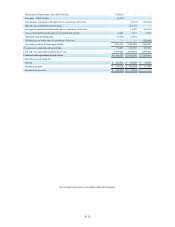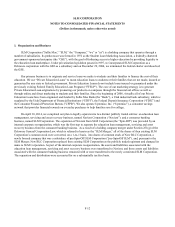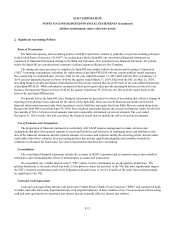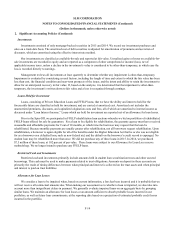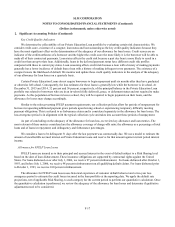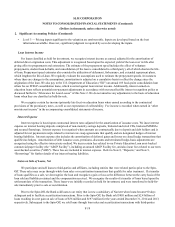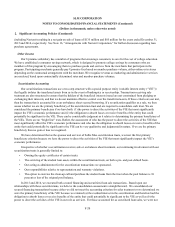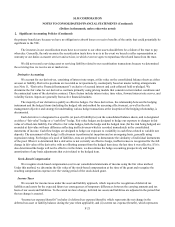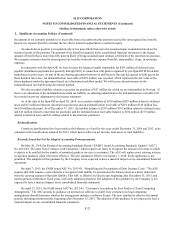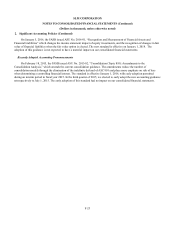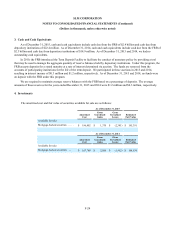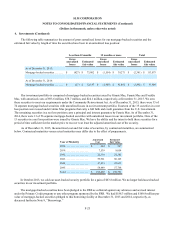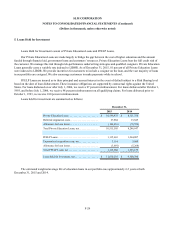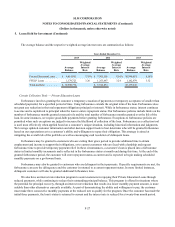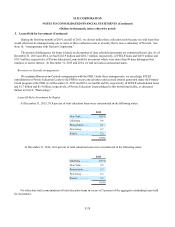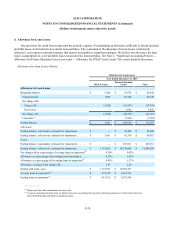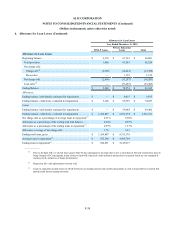Sallie Mae 2015 Annual Report Download - page 111
Download and view the complete annual report
Please find page 111 of the 2015 Sallie Mae annual report below. You can navigate through the pages in the report by either clicking on the pages listed below, or by using the keyword search tool below to find specific information within the annual report.SLM CORPORATION
NOTES TO CONSOLIDATED FINANCIAL STATEMENTS (Continued)
(Dollars in thousands, unless otherwise noted)
2. Significant Accounting Policies (Continued)
F-21
the primary beneficiary because we have no obligation to absorb losses or receive benefits of the entity that could potentially be
significant to the VIE.
The investors in our securitization trusts have no recourse to our other assets should there be a failure of the trust to pay
when due. Generally, the only recourse the securitization trusts have to us is in the event we breach a seller representation or
warranty or our duties as master servicer and servicer, in which event we agree to repurchase the related loans from the trust.
We did not record a servicing asset or servicing liability related to our securitization transactions because we determined
the servicing fees we receive are at market rate.
Derivative Accounting
We account for our derivatives, consisting of interest rate swaps, at fair value on the consolidated balance sheets as either
an asset or liability. Derivative positions are recorded as net positions by counterparty based on master netting arrangements
(see Note 11, “Derivative Financial Instruments”) exclusive of accrued interest and cash collateral held or pledged. We
determine the fair value for our derivative contracts primarily using pricing models that consider current market conditions and
the contractual terms of the derivative contract. These factors include interest rates, time value, forward interest rate curves, and
volatility factors. Inputs are generally from active financial markets.
The majority of our derivatives qualify as effective hedges. For these derivatives, the relationship between the hedging
instrument and the hedged items (including the hedged risk and method for assessing effectiveness), as well as the risk
management objective and strategy for undertaking various hedge transactions at the inception of the hedging relationship, is
documented.
Each derivative is designated to a specific (or pool of) liability(ies) on the consolidated balance sheets, and is designated
as either a “fair value” hedge or a “cash flow” hedge. Fair value hedges are designed to hedge our exposure to changes in fair
value of a fixed-rate liability. For effective fair value hedges, both the hedge and the hedged item (for the risk being hedged) are
recorded at fair value with any difference reflecting ineffectiveness which is recorded immediately in the consolidated
statements of income. Cash flow hedges are designed to hedge our exposure to variability in cash flows related to variable rate
deposits. The assessment of the hedge’s effectiveness is performed at inception and on an ongoing basis, generally using
regression testing. For hedges of a pool of liabilities, tests are performed to demonstrate the similarity of individual instruments
of the pool. When it is determined that a derivative is not currently an effective hedge, ineffectiveness is recognized for the full
change in fair value of the derivative with no offsetting amount from the hedged item since the last time it was effective. If it is
also determined the hedge will not be effective in the future, we discontinue the hedge accounting prospectively and begin
amortization of any basis adjustments that exist related to the hedged item.
Stock-Based Compensation
We recognize stock-based compensation cost in our consolidated statements of income using the fair value method.
Under this method, we determine the fair value of the stock-based compensation at the time of the grant and recognize the
resulting compensation expense over the vesting period of the stock-based grant.
Income Taxes
We account for income taxes under the asset and liability approach, which requires the recognition of deferred tax
liabilities and assets for the expected future tax consequences of temporary differences between the carrying amounts and tax
basis of our assets and liabilities. To the extent tax laws change, deferred tax assets and liabilities are adjusted in the period that
the tax change is enacted.
“Income tax expense/(benefit)” includes (i) deferred tax expense/(benefit), which represents the net change in the
deferred tax asset or liability balance during the year when applicable, and (ii) current tax expense/(benefit), which represents


